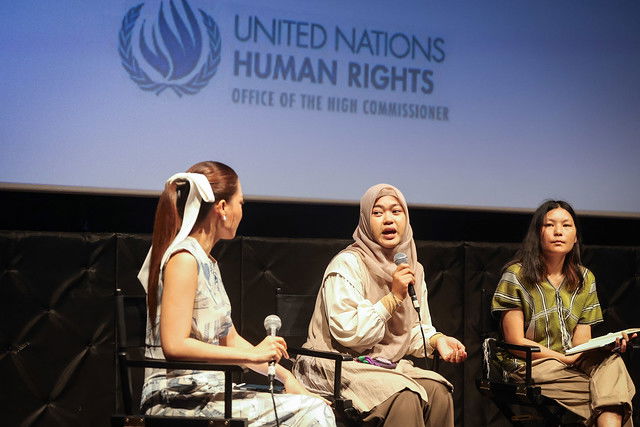Art as a Catalyst for Change: The U.S. Human Rights and Culture of Peace Museum

The U.S. Human Rights and Culture of Peace Museum (HRCPM), managed by the U.S. Human Rights and Culture of Peace Foundation, stands as a beacon of hope, utilizing the powerful language of art to champion human rights and cultivate a culture of peace. Recognizing that the challenges facing humanity, particularly the escalating crisis of climate change, are intrinsically linked to human rights, the museum has taken a bold stance, declaring these issues as inseparable.
By Michael Thompson
The U.S. Human Rights and Culture of Peace Museum (HRCPM), managed by the U.S. Human Rights and Culture of Peace Foundation, stands as a beacon of hope, utilizing the powerful language of art to champion human rights and cultivate a culture of peace. Recognizing that the challenges facing humanity, particularly the escalating crisis of climate change, are intrinsically linked to human rights, the museum has taken a bold stance, declaring these issues as inseparable.
Through a diverse range of innovative programs and thought-provoking exhibitions, the HRCPM, a leading non-profit arts organization, strives to educate and inspire. Its core mission is to illuminate the fundamental importance of human rights and their indispensable role in fostering a just and peaceful society. The museum believes that a world built on respect for human dignity and fundamental freedoms is not just a noble ideal, but a prerequisite for a thriving and sustainable future.
The Power of Art for Human Rights:
The HRCPM understands that art has the ability to transcend language barriers and cultural differences, fostering empathy and sparking dialogue. By leveraging the evocative nature of art – be it painting, sculpture, photography, or performance – the museum seeks to:
Raise awareness: The museum's exhibitions and programs shed light on critical human rights issues, including climate change, social injustice, and discrimination, fostering a better understanding of their far-reaching impact.Promote empathy: Engaging with art can help viewers connect with the lived experiences of others, cultivating compassion and understanding for individuals and communities facing human rights violations.Inspire action: By presenting compelling narratives and challenging perspectives, the museum encourages visitors to become active agents of change, advocating for the protection and advancement of human rights globally.Climate Change: A Human Rights Crisis:
The HRCPM's commitment to addressing climate change as a human rights crisis is a crucial aspect of its mission. The museum acknowledges that the impacts of climate change – from displacement and food scarcity to increased conflict and health risks – disproportionately affect marginalized communities and exacerbate existing inequalities. By showcasing art that explores these issues, the museum aims to galvanize individuals and communities to take action for a more sustainable and equitable future.
Building a Culture of Peace:
The museum's dedication to fostering a culture of peace is interwoven throughout its work. By fostering dialogue, promoting understanding, and celebrating the diverse tapestry of human experiences, the HRCPM creates space for individuals to connect and build bridges across differences. This commitment to peacebuilding is a crucial element in creating a world where human rights are not just enshrined in documents, but lived and celebrated by all.
The U.S. Human Rights and Culture of Peace Museum embodies the belief that art can be a powerful catalyst for positive change. By engaging with the public through innovative exhibitions and programs, the HRCPM is establishing a vital platform for promoting human rights and building a more peaceful and just world—one artwork, one conversation, and one inspired action at a time.